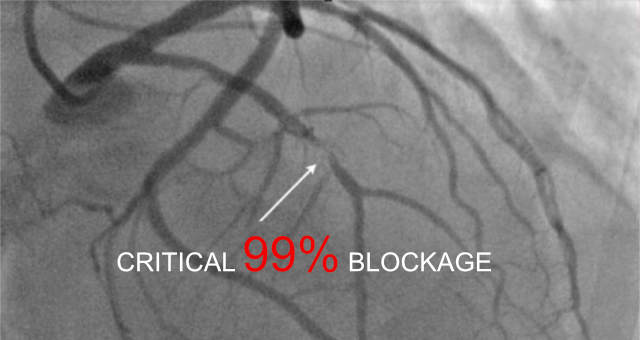- A slender tube, a guided tour within, Reveals heart’s secrets, clear as day. With ease it threads, a journey to begin, To clarify the truth, in light’s pure ray.
- In veins and arteries, it smoothly glides, This coronary angiogram, a vital quest. Illuminating where blockage resides, A path to healing hearts, at its best.

The Warm-up Whimsy (Because Every Intellectual Workout Needs a Bit of Fun)
Picture this: Your heart, not being tech-savvy, can’t slide into your DMs or drop emojis. Instead, it sends cryptic texts in the form of chest pain or a dizzy spell, kind of like your grandma trying to use slang. It’s saying, “Hey buddy, something’s not quite right here.”
Enter the Coronary Angiogram – the Google Maps for your heart’s intricate network of roads, a.k.a. arteries. Just as you’d use your GPS to avoid traffic jams during rush hour, doctors use this nifty tool to spot any blockages causing a ruckus in your heart’s highways. These blockages are like those annoying roadworks that make you late for work.

The angiogram helps your quack navigate, ensuring your heart doesn’t end up in a bumper-to-bumper situation, keeping the traffic (blood flow) moving smoothly and keeping you out of the ‘heart’ of the trouble.
When Your Heart Whispers (or Shouts)

- The Shouting Party – The Symptomatic Subjects: These are folks who might experience breathlessness while chasing their dog, palpitations while watching a thriller, or a mysterious chest pain that’s definitely not from last night’s spicy meal. Also, let’s not forget the dizzy spells that aren’t just from your last spinning class, or those moments when you almost faint while laughing too hard. In these cases, your heart might be dropping hints that it needs a checkup.
- Silent Speakers – The Asymptomatic: Surprisingly, some hearts are like introverts at a party – they won’t speak up. Diabetics, for instance, might not feel classic heart pain but could still have heart issues. Here, Coronary Angiograms step in like a great conversation starter, finding out what’s going on without any symptoms shouting for attention.

Decoding Chest Pains: Is It the Heart or Something Else?
Decoding chest pains is like trying to understand a teenager’s text message: it’s complicated, a bit dramatic, and often leaves you guessing. Is your heart sending a distress signal, or is it just your body throwing a tantrum over that extra-spicy taco from last night? This is where the angiogram comes in, playing detective to solve the chest pain conundrum.

Imagine chest pain as a cryptic message in a bottle, washed up from the mysterious island of Your Body. The angiogram is like the seasoned investigator you call in to crack the code. It peeks into the inner workings of your chest, trying to figure out if the pain is a heartfelt (pun intended) issue like ischemia – a fancy word for your heart not getting enough blood – or something less dramatic.
Sometimes, it’s not about the heart at all. It could be your stomach, still holding a grudge about that super-hot curry you dared to eat. Or maybe it’s the pericardium – think of it as your heart’s stylish overcoat – getting a bit inflamed and causing a stir. The angiogram sorts through these possibilities like a detective sifting through clues, determining if your chest pain is a romantic saga of the heart, a culinary misadventure, or something else entirely.

And let’s be real: sometimes, chest pain could just be your body’s over-the-top way of saying, “Hey, take it easy!” Like when you sprint for the bus and your chest screams, “Whoa, we didn’t sign up for this cardio session!” (Read more)
In the end, the angiogram isn’t just a procedure; it’s the Sherlock Holmes of the medical world, unraveling the mystery behind your chest’s cry for attention, ensuring that your heart (or stomach, or pericardium) gets the right kind of TLC it needs.
In the Land of Doubt: Better Safe Than Sorry
Welcome to the Land of Doubt, where even the slightest murmur of uncertainty about chest pains turns into a full-blown detective saga. In this land, your heart is the enigmatic lead character, and the doctors? They’re more like cautious hikers checking the weather app before venturing out. You know the drill – better to peek at the forecast and pack an umbrella than to get caught in a downpour.

When it comes to chest-related complaints, it’s a lot like planning an outdoor adventure. If there’s even the faintest hint of a cloud (read: chest pain), doctors don’t just shrug and hope for the best. They reach for the angiogram, their trusty ‘weather app’ for the heart. It’s their way of saying, “Let’s not guess if it’s going to be a heart-storm or just breezy indigestion.”
Think of the angiogram as your go-to tool for clarity. Just like you wouldn’t hike up a mountain without checking if a storm is brewing, doctors don’t take a gamble with your heart. They use this handy tool to peer into your chest’s future – is it gearing up for a cardiac thunderstorm or is it just passing clouds of non-cardiac origin?

In the Land of Doubt, the motto is ‘Better Safe Than Sorry’. It’s about taking that extra step for peace of mind. Because when it comes to your heart, playing it safe isn’t just smart; it’s essential. So, the next time there’s a whisper of doubt about chest pains, remember, an angiogram could be the weather forecast that keeps you dry and safe on your journey.
Post-EECP: The Victory Lap
Think of EECP (Enhanced External Counterpulsation) as a motivational speaker for your heart’s arteries. It’s like a personal trainer, giving them the pep talk of their lives, encouraging them to open up new pathways and get the blood flowing like a champ. Now, after this high-energy, feel-good session, how do you showcase the amazing work your heart has put in? Enter the angiogram, the ultimate ‘before-and-after’ photo session for your heart.
Picture this: Before the EECP, your heart’s arteries might have been like a traffic-clogged freeway during rush hour. Blood flow was slow, and things weren’t looking too great. Then EECP steps in, like a top-notch traffic controller, and voilà! New pathways emerge, blood flows smoother, and your heart is like a freeway after rush hour – open and efficient.

The angiogram after EECP is like that satisfying reveal in a home makeover show. It’s the grand unveiling of your heart’s hard work. Doctors use it to take a peek inside and say, “Look! Here are the new blood vessels your heart created. Isn’t it amazing?” It’s like comparing old and new photos, where the ‘new’ is your heart showing off its newfound vitality.
This is the victory lap for your heart. The angiogram proudly displays the fruits of your heart’s labor – a network of new, healthy blood vessels, all thanks to the EECP. It’s not just a medical procedure; it’s a celebration of what your heart can achieve with a little encouragement and a lot of hard work. So, when you hear ‘Post-EECP angiogram,’ think of it as a victory parade, showcasing your heart’s triumph.
Checking the Plumbing Post-Op
Imagine you’ve just had a bunch of fancy new plumbing installed in your house – you’d want to make sure everything’s working perfectly, right? No drips, no clogs, no surprise indoor fountains. Well, that’s pretty much what happens with your heart after surgeries like stenting or bypasses. The doctors don’t just pat themselves on the back and call it a day. They bring in the angiogram – the heart’s ultimate quality control check.
Think of an angiogram post-op as the plumber’s final inspection, but for your heart. It’s like flipping on all the faucets, checking the pipes, and making sure the water pressure’s just right. In heart terms, this means ensuring the stents are like well-placed straws in a juice box, not bent or blocked, and the bypasses are like smooth new highways, letting blood zip around any previous blockages.

It’s a bit like a car mechanic taking a freshly tuned-up car for a spin. The angiogram takes a look under the heart’s hood to ensure the surgical tweaks are doing exactly what they’re supposed to – keeping the blood flowing without any hiccups. No leaks, no clots, just a smooth and steady flow.
So, when it comes to post-op heart care, angiograms are not just a formality; they’re essential. They’re the reassuring thumbs-up that everything inside is running as smoothly as a well-oiled machine – or, in this case, as a perfectly flowing system of heart plumbing!
The New Kid on the Block: CT-Coronary Angiograms
Remember the old, invasive angiograms where you’d feel like a car in a lengthy, uncomfortable service check-up? Well, those days are fading. Welcome to the era of CT-Coronary Angiograms, a quicker, less invasive, and less drama-filled procedure (Read scholarly article)

- The 5-Beat Wonder: This is like the TikTok version of an angiogram – quick and efficient. The entire angiogram is done in the time it takes for your heart to beat five times. Talk about efficiency!
- Less Hassle, More Comfort: No more long hospital stays, no hefty bills, and definitely lesser risks. It’s like ordering takeout instead of cooking a full-blown dinner – convenient and easy.
- Myth-Busting Accuracy: Despite what some naysayers might claim, CT-Angiograms are like the Sherlock Holmes of heart diagnostics – highly accurate. Numerous studies have given it a thumbs up, proving it’s as reliable as the traditional, more invasive methods.
After a heart surgery, you can’t just cross your fingers and hope for the best. That’s where the angiogram steps in, much like a meticulous quality inspector with a magnifying glass. It’s not about doubting the surgeon’s skills, but about double-checking that everything is in tip-top shape.
Think of your heart as a newly renovated house. The surgeons have done their part – installing shiny new pipes (stents) and creating detours (bypasses) to bypass traffic (blockages). Now, imagine the angiogram as the final walkthrough with the contractor. You want to make sure there are no leaks (blockages) and that the water (blood) is flowing just right through these new pathways.

The angiogram post-op is like the heart’s ribbon-cutting ceremony. It’s the moment of truth, revealing whether the surgical additions are working harmoniously with your body’s natural rhythms. It’s reassuring to see that the heart’s electrical system (rhythms and beats) and the plumbing (arteries and stents) are in harmony, ensuring a smooth, uninterrupted flow.
Therefore, the angiogram post-op is not just a routine procedure; it’s a critical step in ensuring your heart’s new ‘hardware’ is functioning efficiently. It’s about taking that extra measure of care, ensuring that your heart, post-surgery, is not just surviving, but thriving.
A Picture Is Worth a Thousand Words

The Curtain Closeout (Time to Draw the Literary Drapes)
In conclusion, whether it’s the traditional angiogram or its modern cousin, the CT-Angiogram (Read scientific article) understanding when and why you might need one is crucial. It’s not just about detecting problems but also about ensuring your heart keeps beating strong, powering through life’s challenges with the same vigor and resilience as our 50-year-old protagonist. Remember, your heart doesn’t just keep you alive; it’s the rhythm to your life’s song, so keep it healthy and listened to!